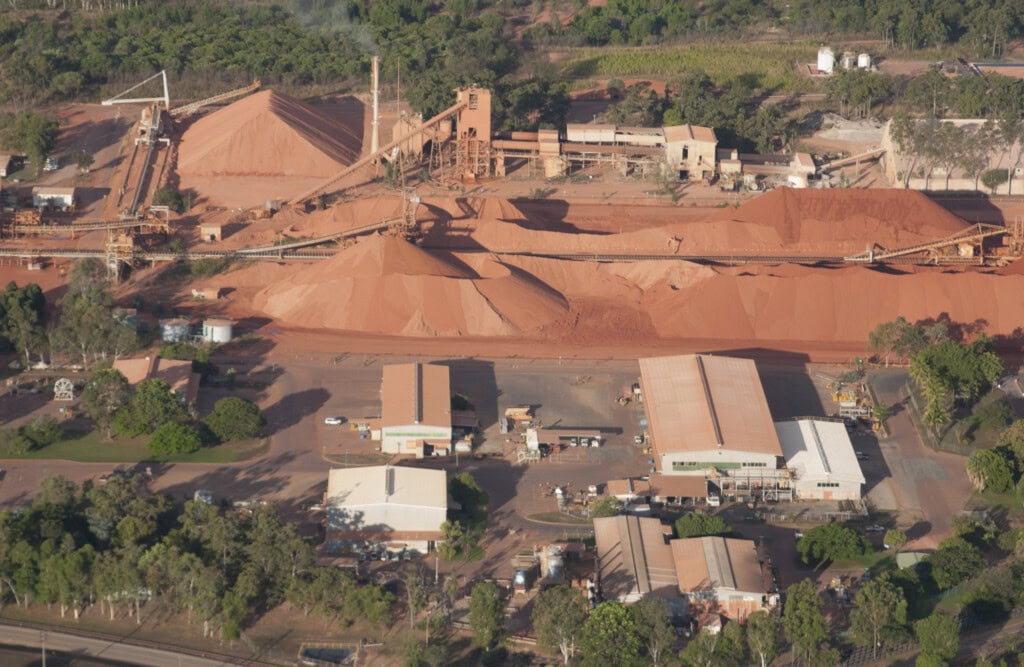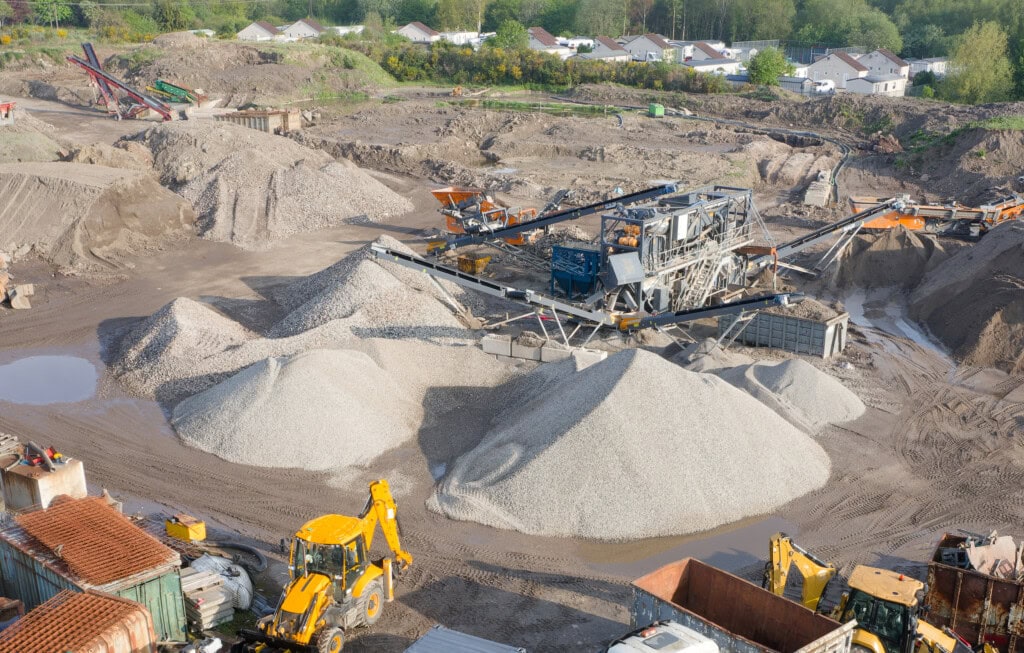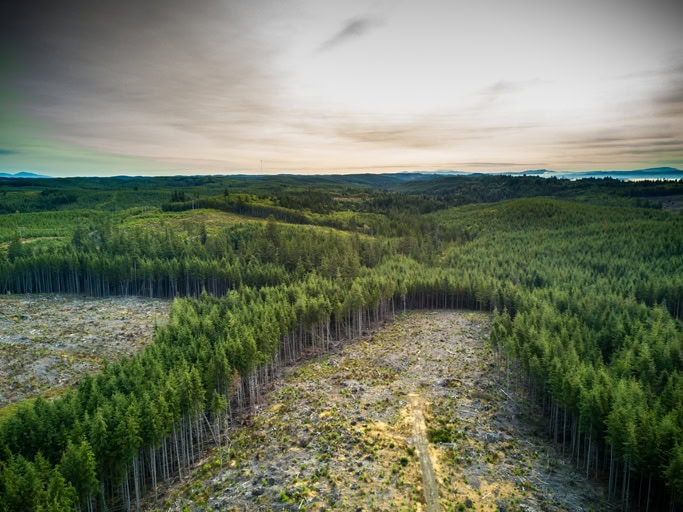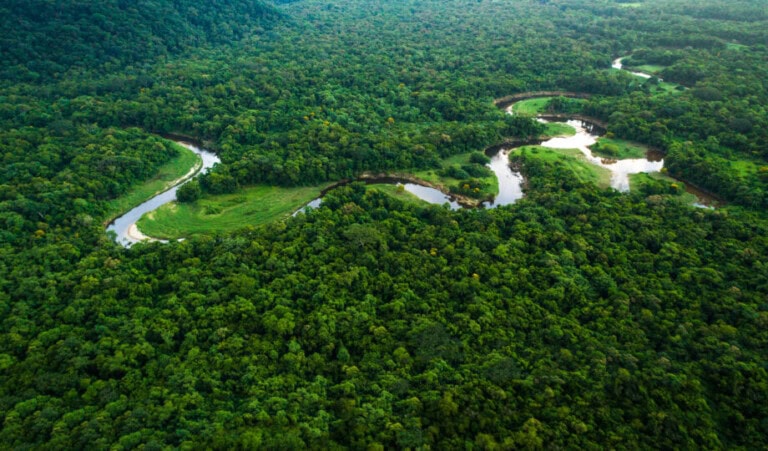What are the environmental impacts of construction materials? An introduction to Embodied Ecological Impacts

What are Embodied Ecological Impacts?
Building on the concept of embodied carbon, embodied ecological impacts are the effects on ecosystems when resources for the built environment are extracted or manufactured. In other words, they represent the changes imposed on our natural environment by international building supply chains before we even begin a new construction project. These impacts occur off-site, primarily due to raw material extraction. UKGBC’s definition of embodied ecological impacts does not include any damage to biodiversity on-site.
The impacts can be wide reaching. They are sometimes positive, but these are overshadowed by the negative impacts of many contemporary practices. These impacts are often indirect, and not always immediately apparent.
Common Embodied Ecological Impacts include:
- Water pollution.
- Loss and fragmentation of habitat – both on land and in marine environments.
- Deforestation, particularly in biodiversity hotspots like tropical rainforests.
- Soil erosion, compaction and contamination.
- Damage by associated infrastructure.
Learn more about Embodied Ecological Impacts and the context of why they’re important here.
What impact do different construction materials have on the environment?
Iron

It’d be hard to imagine our modern built environment without iron. Being the basis for steel production, it is not surprising that iron ore is the most extracted metal worldwide. More than 86% of iron ore is mined in Australia, Brazil, China, India, Russia and South Africa, with much of it being extracted from areas of unique ecological interest. For example, the largest open pit iron mine in the world, the Serra Norte complex, is located in the Amazon rainforest.
Key embodied ecological impacts of iron mining include:
- Habitat destruction – open-pit mining leads to the removal of all vegetation and top soil in order to reach the ore underground.
- Impacts of associated infrastructure – iron ore mines are often in isolated, ecologically diverse areas and the creation of the infrastructure needed to power and serve them such as roads and powerlines can lead to habitat destruction and increased human activity in previously remote regions.
- Water use – mines demand high amounts of fresh water – depleting water supply in already water-stressed regions.
- Contamination and pollution – water and soil that comes into contact with the environmentally harmful waste from iron mining can become contaminated, damaging ecosystem and local community health.
Aluminium

Similarly to iron ore, bauxite, the raw material used to create aluminium, is mined in open pits. It’s mined across the world, with most extraction occurring in Australia, China, Guinea and Brazil. One of aluminium’s strengths is that it is easily recycled, with recycled aluminium representing 35% of the metal in use . However, until we increase recycling rates and decrease virgin material extraction, aluminium production will continue to have a damaging impact on global ecosystems.
Key embodied ecological impacts of aluminium production include:
- Habitat Destruction – many bauxite deposits are found in tropical rainforests such as the Amazon or the Guinean rainforest. Open pit mining demands the removal of all vegetation and top soil to reach the ore underneath, damaging this important habitat.
- Associated Infrastructure – as the mines are in remote locations, the infrastructure needed to service and power them often leads to its own habitat destruction and increased human interference.
- Water use – mines demand high amounts of freshwater, especially in the case of Australia, this exacerbates issues in regions already facing water stress.
- Contamination and pollution – ‘red mud’ bauxite tailings, the waste from mining, are both highly alkaline and saline, presenting a severe threat to wildlife and ecosystems.
Cement

Cement is a fine powder made of limestone, clay and other minerals. It’s most commonly used to make concrete, a material central to modern construction. Unlike iron ore or bauxite, limestone and clay can be found globally, and in the UK we extract them from our own soils. Both are quarried in open pits using blasting and mechanical crushing.
Key embodied ecological impacts of cement include:
- Habitat destruction – limestone is often the base of specific habitats that can be hard or impossible to restore after its removal during open pit mining.
- Sedimentation and erosion – the disturbance of soil and vegetation during extraction can increase the risk of erosion and run off, leading to sediments and pollutants entering local water sources.
Aggregates

Aggregates refer to the small pieces of rock, gravel and sand used in a variety of projects across the built environment, such as the manufacture of concrete, filing voids on construction sites or providing drainage. Over 95% of the aggregates we use in the UK are extracted domestically either through quarrying, marine dredging, river-dredging or crushing previously used materials.
Key embodied ecological impacts of aggregate mining and dredging include:
- Habitat destruction on land – quarrying for minerals necessitates the removal of top-soil and vegetation.
- Water quality impacts – the removal of sand and gravel from riverbeds and sea beds can destroy marine ecosystems, leading to lower water quality, a loss of biodiversity and disrupted food chains.
- Sedimentation and erosion – the disturbance of soil and vegetation during extraction can increase the risk of erosion and run off into water sources – further damaging water quality.
Timber

The built environment is increasingly interested in the renewable and carbon sequestering properties of timber, but its unmanaged extraction damages our natural environment. Timber is harvested worldwide, with the UK mostly using timber felled from forests in Sweden, Latvia, Finland and Germany.
Key embodied ecological impacts of timber logging:
- Habitat loss – forests are key habitats for a wider range of species. Especially when clearing large areas of forest, complex ecosystems are damaged and sometimes destroyed.
- Soil erosion – when the tree canopy is lost, the soil becomes prone to erosion. This is then exacerbated by the use of machinery that compacts and degrades the soil further.
- Disruption of the water cycle – forests are a key regulator of the water cycle, so by removing large areas at once there is a lack of water retention leading to increased run-off and therefore flooding, erosion and drought.
- Indigenous and local community impacts – many people depend on forests for their livelihoods and cultural practices – unsustainable timber harvesting can disrupt their way of life and lead to conflict over resources.
What can we do to reduce the environmental impacts of construction materials?
In the built environment we are only just waking up to the impact of building materials on our natural environment. However, many of the solutions are already in reach. These include:
- Using the resource use mitigation hierarchy, prioritising the use of existing materials over virgin extraction.
- Embracing the circular economy, keeping materials already in our built environment in use.
- Engaging with your supply chain, to understand what impacts the specific materials you are using are having on the natural environment.
- Embracing existing and emerging frameworks like TNFD to assess an organisation’s impact on nature, as well as looking into existing standards such as Forest Stewardship Council or Responsible Steel to examine the impacts of different suppliers.
- Designing projects so that they use materials which have the lowest impact on our already fragile global ecosystems.
You can learn more about the actions you can take on a project or organisation level here as part of our Embodied Ecological Impacts learning hub, and explore the global impacts of these five key materials with our material map.
Appendix
The Mitigation Hierarchy
Prioritise best use of existing assets.
Prioritise reused materials and match availability.
Prioritise recycled and biobased materials and match availability.
Optimise design.
Regenerative or low-impact material extraction.
Avoid Material
Related
It’s net zero, naturally

COP15: Nature as a service; Nature as a lifeline

UKGBC’s upcoming Embodied Ecological Impacts of the Built Environment Project

How a Circular Economy Can Fight Biodiversity Loss


